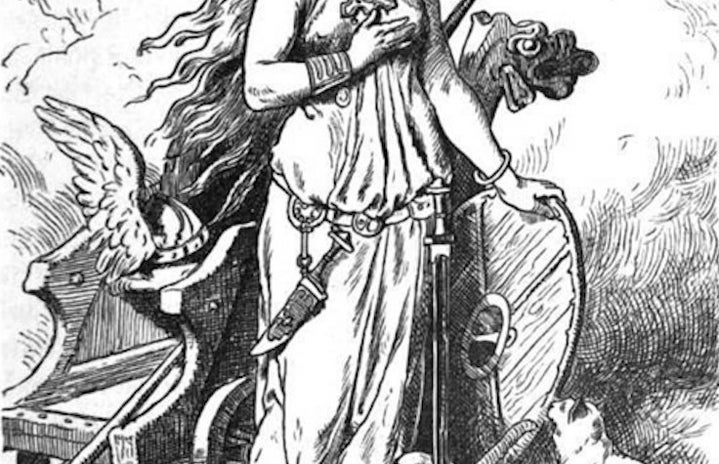I’ve watched lots of videos on YouTube lately about Chinese mythology. It is really cool and it got me thinking about how different, yet similar, it is to Finnish mythology, the mythology of my home country. Then I thought I could write an article about Finnish mythology because I have never seen it being talked about in any other language besides Finnish. It is pretty cool, though, and I think more people should be interested in it. Granted, I do not know that much about it myself, just what I have been taught at school and what little I have found out myself. However, I figured writing this article could be a learning experience for me, too!
The most famous piece of Finnish mythology is Kalevala, the national epic of Finland. Though it obviously does not contain all of Finnish mythology, it is a good way to start learning. Kalevala was published by Elias Lönnrot in 1835. He didn’t write it, though. Rather, he traveled around Finland and listened to people tell stories that had been passed on for generations and wrote them down in poetry form. He edited the stories a little bit to make them more compatible with each other but mostly it’s all written down the way he first heard it.
The main character of Kalevala is Väinämöinen while other characters include Ilmarinen, Lemminkäinen, Joukahainen, The Maiden of the North, and the Bitch of the North. The book starts with the creation of the world; it came into being from a scaup’s egg. At the same time, Väinämöinen was born to Mother Water, a kind of water spirit. Because of this, Väinämöinen can do magic by singing and playing the kantele, a Finnish chord instrument.
A lot happens in Kalevala, but the main story has to do with the Maiden of the North and Sampo, a magical machine that can produce gold and riches. Väinämöinen is in trouble and the Bitch of the North decides to help him, with one condition: he has to make her a Sampo. Väinämöinen gets his friend Ilmarinen to make the machine and Ilmarinen is told he’ll get to marry the beautiful Maiden of the North afterwards. Ilmarinen finishes building the machine but the Maiden refuses to marry him. Soon after, Lemminkäinen seeks the Maiden’s hand but he is told by the Bitch of the North that he has to complete three tasks first. He dies and gets resurrected but in the end, he does not get to marry the Maiden because at some point Ilmarinen came back to try and get the Maiden to marry him again. This time the Maiden does seem to want to marry him because she helps him finish the tasks assigned to him. They get married but Lemminkäinen gets angry and murders the Lord of the North (yes, the man is called a lord and the woman is called a bitch). The people of the North burn Lemminkäinen’s home to get revenge.
At some point, Väinämöinen, Ilmarinen, and Lemminkäinen all decide that they actually want the Sampo back (don’t know why Ilmarinen can’t make a new one). Väinämöinen sings to everyone in the North to sleep and they steal the Sampo. However, the Bitch of the North wakes up and summons a sea monster to attack the men who are escaping on a boat. When that doesn’t work out, she turns herself into an eagle and fights them all. That’s absolutely badass but unfortunately, the Sampo just falls into the ocean and is never seen again. Both parties go their separate ways but later on the Bitch of the North sends a bear and diseases to assault the people of Kalevala, which is the hometown of our heroes (and the name of the book!), and also hides the sun and the moon. However, Väinämöinen is able to kill the bear and cure everyone as well as find the hidden celestial bodies.
Kalevala ends when a young woman called Marjatta eats a lingonberry and gets pregnant giving birth to a boy. This is, of course, an analog to Christianity that gained popularity in Finland. At the very end of the book, Väinämöinen is so angry at the boy that he sails away leaving everyone behind. Maybe this is how Finns some hundred years ago felt about Christianity.
Kalevala can be pretty wild but it’s actually very entertaining as well. Learning about the beliefs of Finns from several hundred years ago is really fascinating. Also, the Bitch of the North is an absolute queen. If you ever get a chance, I recommend checking Kalevala out. It’s probably not your average book but maybe you’ll be pleasantly surprised.


